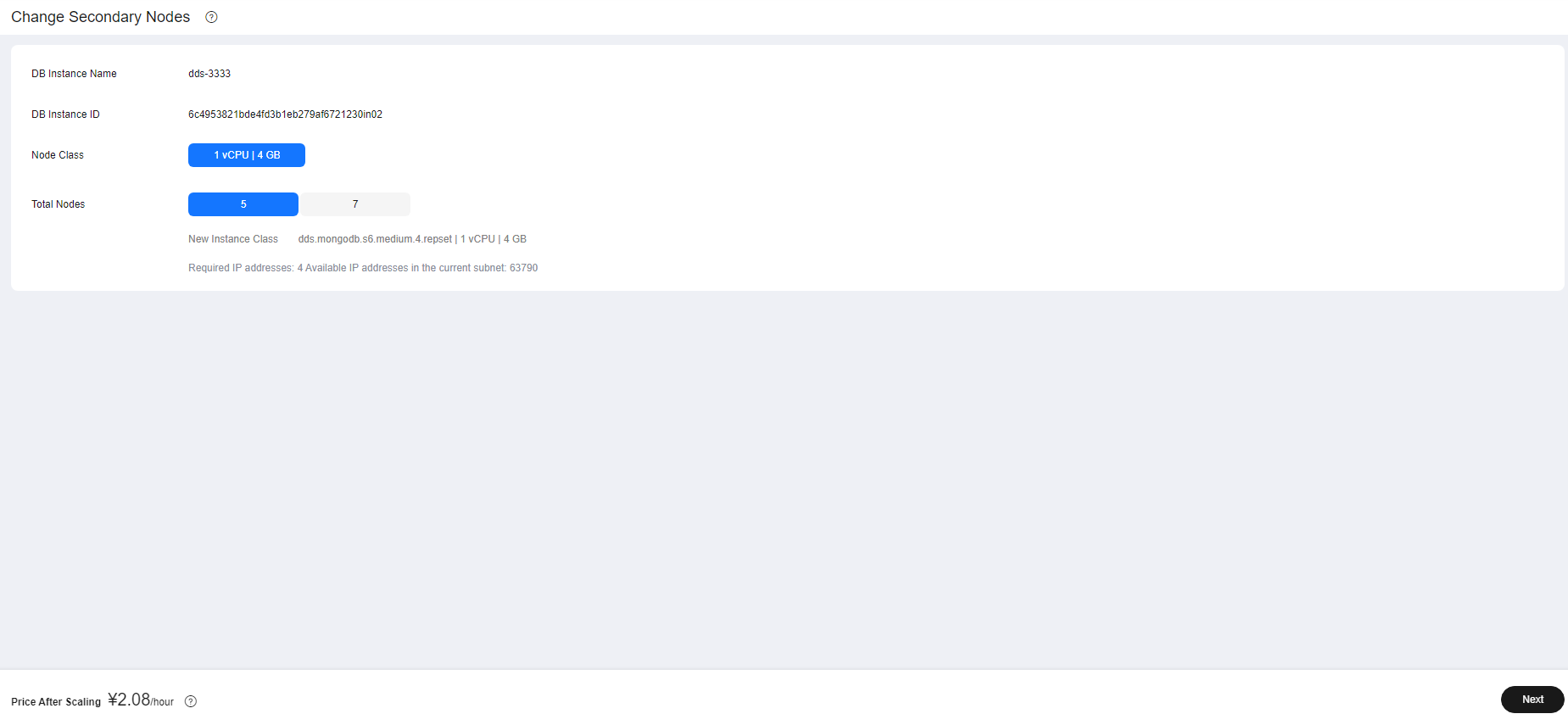Adição de nós de instância do conjunto de réplicas
O DDS permite dimensionar uma instância de conjunto de réplicas de três nós para até cinco ou até sete nós. Todos os nós recém-adicionados são nós secundários e suportam alternâncias primárias/secundárias, melhorando a confiabilidade dos dados.

Somente usuários da lista de permissões podem usar essa função. Você precisa enviar um tíquete de serviço para solicitar essa função. No canto superior direito do console de gerenciamento, escolha Service Tickets > Create Service Ticket para enviar um tíquete de serviço.
Precauções
- Para adicionar nós, o status da instância deve ser Available, Deleting backup ou Checking restoration.
- Uma instância de BD não pode ser excluída enquanto os nós estão sendo adicionados.
- Se houver quaisquer nós em espera recém-adicionados, eles não poderão participar desta alternância. Quando você adiciona um nó à espera novo, o endereço da conexão de HA precisa de ser reconfigurado, e o nó novo é congelado por 12 horas.
- Quando nós de instância estão sendo adicionados, a instância de BD pode ser desconectada intermitentemente uma ou duas vezes por até 30s de cada vez.
- Os nós não podem ser excluídos manualmente.
Detalhes de preços
- Uma instância de pagamento por uso ainda é cobrada por hora depois que novos nós são adicionados.
- Se você adicionar nós a uma instância anual/mensal, você vai pagar a diferença de preço ou obter um reembolso.
- Para obter detalhes, consulte Detalhes de preços do produto.
Procedimento
- Faça logon no console de gerenciamento.
- Clique em
 no canto superior esquerdo e selecione uma região e um projeto.
no canto superior esquerdo e selecione uma região e um projeto. - Clique em
 no canto superior esquerdo da página e escolha Databases > Document Database Service.
no canto superior esquerdo da página e escolha Databases > Document Database Service. - Na página Instances, clique no nome da instância do conjunto de réplicas.
- Na área Node Information da página Basic Information, clique em Change Secondary Nodes.
Figura 1 Informações básicas

- Especifique Total Nodes e clique em Next.
Figura 2 Selecionar o número de nós

Você pode adicionar cinco ou sete nós.
- Na página exibida, confirme as informações de configuração do nó.
- Para instâncias de BD anuais/mensais
- Se você precisar modificar suas configurações, clique em Previous para voltar à página para especificar detalhes.
- Se você não precisar modificar suas configurações, clique em Submit para acessar a página de pagamento e concluir o pagamento.
- Para instâncias de BD de pagamento por uso
- Se você precisar modificar suas configurações, clique em Previous para voltar à página para especificar detalhes.
- Se você não precisar modificar suas configurações, clique em Submit para adicionar os nós.
- Para instâncias de BD anuais/mensais
- Visualize o resultado da adição de nós.
- Quando um nó está sendo adicionado, o status da instância é Adding node. Todo o processo leva cerca de 15 minutos.
- Na área Node Information, exiba as informações sobre os nós que você adicionou.






